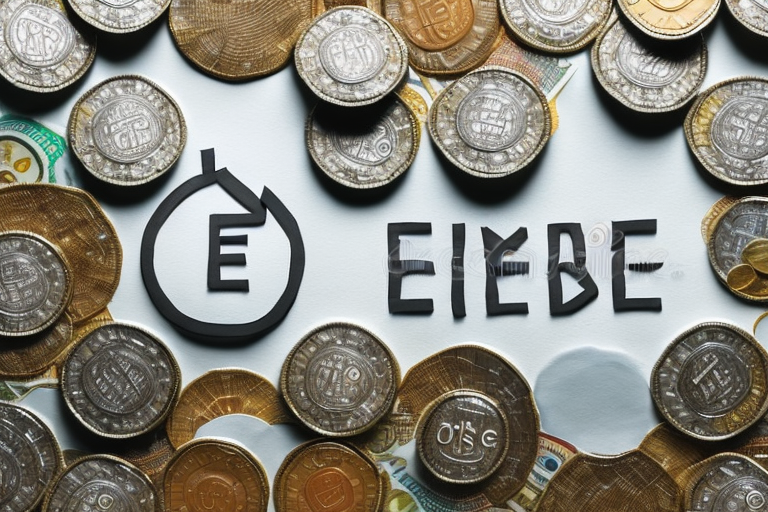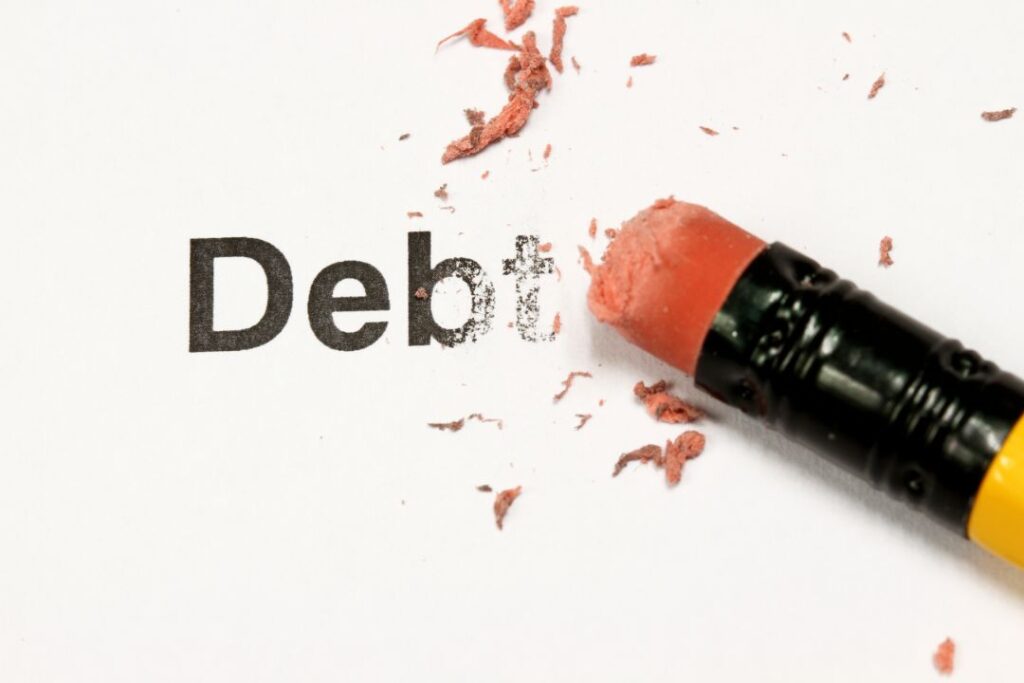Debt recycling is a strategy that many homeowners are exploring to maximize their property investments. By understanding the concept of debt recycling and its potential benefits, homeowners can make informed decisions about their financial future. However, it is crucial to recognize the risks involved and take the necessary steps to implement and maintain a successful debt recycling strategy.
Understanding the Concept of Debt Recycling
Debt recycling is a financial strategy that involves redirecting non-tax-deductible debt, such as a mortgage, towards tax-deductible debt, such as an investment loan. The goal is to use the equity in your property to invest in income-producing assets while taking advantage of potential tax benefits.
Debt recycling is a concept that has gained popularity among homeowners looking to maximize their wealth-building potential. By strategically utilizing the equity in their homes, individuals can tap into a source of funds that can be used to invest in assets with the potential for long-term growth and income.
But how does debt recycling actually work? Let’s delve into the basics of this financial strategy.
The Basics of Debt Recycling
In its simplest form, debt recycling works by using the equity in your home to borrow against for investment purposes. This new loan is then used to purchase income-generating assets, such as shares or property. The income generated from these assets is then used to repay the investment loan, while the interest on the investment loan can be tax-deductible.
Imagine you own a home worth $500,000, and you have paid off $200,000 of your mortgage. This means you have $200,000 in equity that can be used for debt recycling. You decide to take out an investment loan using this equity as collateral. With the funds obtained from the investment loan, you invest in a diversified portfolio of stocks and bonds.
Over time, the investments in your portfolio start generating income in the form of dividends and interest payments. This income can then be used to repay the investment loan. As you continue to make repayments, the equity in your home remains intact, allowing you to potentially recycle the debt again in the future.
One of the key advantages of debt recycling is the potential tax benefits it offers. In many countries, the interest paid on investment loans is tax-deductible. This means that by redirecting your non-tax-deductible debt towards tax-deductible debt, you can potentially reduce your overall tax liability.
How Debt Recycling Works for Homeowners
For homeowners, debt recycling offers an opportunity to leverage the value of their property to build wealth. By borrowing against the equity in their home, homeowners can access funds to invest in assets that have the potential to provide long-term growth and income. As these assets generate income, it can be used to repay the investment loan and ultimately, increase the value of the homeowner’s property portfolio.
Let’s say you are a homeowner with a mortgage of $300,000 and your property is valued at $600,000. This means you have $300,000 in equity that can be used for debt recycling. By taking out an investment loan using this equity, you can invest in a range of income-generating assets, such as rental properties or dividend-paying stocks.
As the rental properties generate rental income or the stocks pay dividends, you can use this income to repay the investment loan. Over time, the value of your property may also appreciate, further increasing your equity and potential borrowing capacity for future debt recycling.
It is important to note that debt recycling involves risks and should be approached with careful consideration. The performance of the assets you invest in can fluctuate, and there is always the possibility of incurring losses. Additionally, the tax implications of debt recycling can vary depending on your jurisdiction and individual circumstances.
Before embarking on a debt recycling strategy, it is advisable to seek professional financial advice to ensure it aligns with your financial goals and risk tolerance.

The Benefits of Debt Recycling for Property Investments
There are several benefits to implementing a debt-recycling strategy for property investments. Debt recycling allows homeowners to take advantage of the equity in their homes and expand their investment opportunities. By redirecting non-tax-deductible debt towards tax-deductible debt, homeowners can potentially reduce their overall tax liabilities and enhance their financial flexibility. Let’s explore these benefits in more detail.
Increasing Your Property Portfolio
One of the key advantages of debt recycling is the ability to accelerate the growth of your property portfolio. By accessing the equity in your home, you can unlock funds that can be used to purchase additional properties. This expansion not only increases your potential rental income but also allows for diversification in different property markets.
Imagine you own a property in a thriving urban area, and its value has appreciated significantly over the years. By implementing a debt recycling strategy, you can tap into this equity and use it as a down payment for another property in a different location. This diversification can help mitigate risks associated with a single property market and potentially increase your overall returns.
Furthermore, as you continue to grow your property portfolio through debt recycling, the rental income generated from these investments can be used to repay the investment loan. This creates a positive cash flow cycle that not only expands your portfolio but also contributes to your long-term financial goals.
Enhancing Your Financial Flexibility
Debt recycling provides homeowners with greater financial flexibility. By redirecting non-tax-deductible debt towards tax-deductible debt, you can potentially reduce your overall tax liabilities and increase your disposable income.
Let’s say you have a mortgage on your primary residence, which is considered non-tax-deductible debt. By implementing a debt recycling strategy, you can use the equity in your home to secure an investment loan, which is considered tax-deductible debt. The interest payments on this investment loan can be claimed as a tax deduction, reducing your taxable income and potentially lowering your tax bill.
Additionally, the income generated from your investment assets can contribute towards repaying the investment loan. This not only helps you build equity in your investment properties but also increases your financial flexibility. The rental income can be used to cover loan repayments, freeing up your personal income for other expenses or investment opportunities.
Moreover, as you continue to recycle your debt and build your property portfolio, you may also benefit from capital growth. Over time, the value of your investment properties may appreciate, further enhancing your financial flexibility. You can choose to leverage this increased equity to expand your portfolio even more or use it for other financial goals, such as funding your children’s education or planning for retirement.
In conclusion, debt recycling offers numerous benefits for property investors. It allows you to accelerate the growth of your property portfolio, diversify your investments, and potentially reduce your tax liabilities. Moreover, it enhances your financial flexibility by leveraging the income generated from your investment assets and the equity in your properties. By implementing a well-thought-out debt recycling strategy, you can maximize the potential of your property investments and work towards achieving your long-term financial goals.
The Risks Involved in Debt Recycling
While debt recycling can offer significant benefits, it is essential to consider the associated risks.
Debt recycling is a financial strategy that involves using the equity in your home to invest in income-generating assets. By doing so, you can potentially increase your wealth and reduce your mortgage debt. However, like any investment strategy, there are risks involved that homeowners need to be aware of. If you want to get information about The Federation Funding Agreements Framework you can check out by clicking here.
Potential Financial Pitfalls
Investing in income-generating assets carries the risk of market fluctuations and potential losses. It is crucial for homeowners to carefully research and assess their investment options before utilizing debt recycling. While the idea of generating additional income may be enticing, it is important to remember that there are no guarantees in the financial markets.
Market volatility can lead to a decline in the value of your investments, which could result in financial losses. Homeowners need to be prepared for the possibility of their investment not performing as expected. Proper risk management strategies should be implemented to protect their financial position.
Additionally, homeowners need to consider the impact of interest rates on their debt recycling strategy. If interest rates rise significantly, it could increase the cost of borrowing and affect the overall profitability of the investment. It is crucial to factor in potential interest rate changes and assess whether the investment can still generate enough income to cover the increased borrowing costs.
Evaluating Risk vs Reward
Homeowners considering debt recycling must evaluate the potential rewards against the risks involved. They should consider factors such as interest rates, market volatility, and their own financial circumstances. It is important to have a clear understanding of their risk tolerance and financial goals.
Seeking professional advice from a financial advisor can help homeowners make informed decisions tailored to their specific situation. A financial advisor can provide valuable insights and guidance on the potential risks and rewards of debt recycling. They can help homeowners assess their investment options, develop risk management strategies, and determine whether debt recycling aligns with their long-term financial goals.
Furthermore, homeowners should also consider their own financial circumstances before engaging in debt recycling. It is important to have a stable income and a solid financial foundation to support the investment. Homeowners should assess their ability to manage additional debt and ensure they have a contingency plan in case of unexpected financial difficulties.
In conclusion, while debt recycling can be a beneficial strategy for homeowners, it is essential to carefully evaluate the risks involved. Market fluctuations, interest rate changes, and individual financial circumstances all play a role in determining the success of debt recycling. By conducting thorough research, seeking professional advice, and implementing proper risk management strategies, homeowners can make informed decisions and potentially reap the rewards of debt recycling.
Steps to Implement Debt Recycling
Implementing a debt recycling strategy requires careful planning and execution. The following steps can guide homeowners through the process:
Preparing for Debt Recycling
Before deciding to embark on debt recycling, homeowners should assess their financial goals and objectives. They should ensure that they have a clear understanding of their current financial position and seek professional advice to determine if debt recycling aligns with their long-term plans.
The Process of Debt Recycling
The process of debt recycling involves accessing the equity in your home through refinancing or obtaining a line of credit. These funds are then used to invest in income-producing assets. Regular monitoring and review of these investments are necessary to track their performance and adjust the strategy if needed.
Maintaining a Debt Recycling Strategy
Maintaining a successful debt recycling strategy requires ongoing evaluation and adjustments.
Regular Review and Adjustment
Homeowners should regularly review the performance of their investment assets and adjust their strategy accordingly. This includes evaluating the income generated, monitoring market conditions, and considering potential opportunities or risks that may arise.
Long-term Considerations for Debt Recycling
Debt recycling is a long-term strategy. Homeowners should consider the impact of their investments on their overall financial goals and objectives. They should regularly reassess their financial position, taking into account changes in income, expenses, and market conditions, to ensure that their debt recycling strategy continues to align with their desired outcomes.
Debt recycling can be a powerful strategy for homeowners looking to maximize their property investments. By understanding the concept, potential benefits, risks involved, and necessary steps to implement and maintain a debt recycling strategy, homeowners can make informed decisions to achieve their financial goals.
